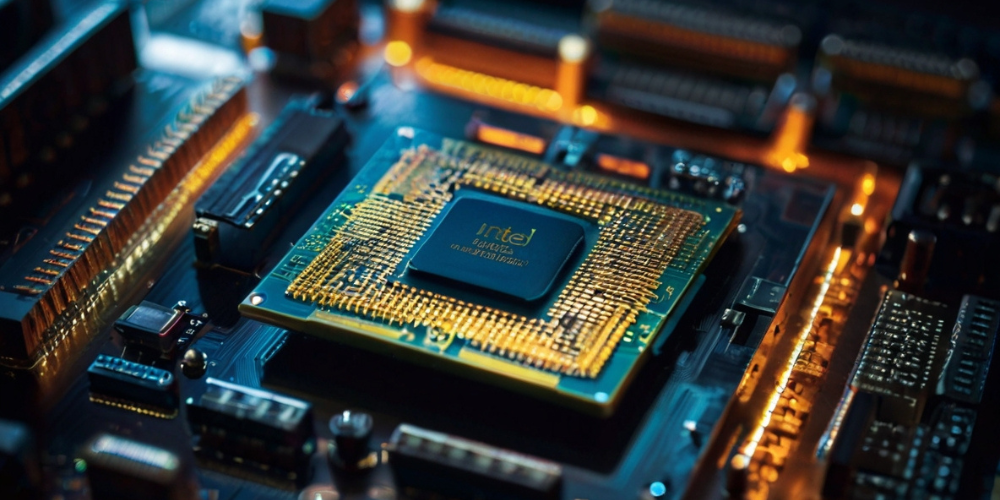Intel's CPU Crisis: Navigating Challenges, Consumer Backlash, and Industry Implications
- Aug 16, 2024
- 1038

Intel's recent troubles surrounding their 14th and 13th Gen Desktop CPUs have shaken both consumer trust and the company's standing in the market. From unresolved issues to denied RMA requests, the company has yet to provide satisfactory answers to the problems that have been tormenting gamers and professional users alike. This article delves into the evolving situation, exploring Intel's responses, the consumer backlash, and how competitors like AMD are benefiting from Intel's missteps.
Chapter 1: The Breaking Point
Intel has long been revered as a major player in the CPU market. However, the firm's reputation has taken a significant hit due to the instability issues plaguing its 14th and 13th Gen Desktop CPUs. These problems first surfaced in early 2023 and have since affected thousands of users. Although Intel initially appeared clueless about the root of the issue, they've taken some steps to address it, including releasing a fix for an eTVB bug. Yet, more serious concerns remain unaddressed.
Our editor, Hassan, has experienced these issues firsthand, adding credibility to numerous user reports. From gamers facing frequent disruptions to professional users encountering critical system failures, the situation has escalated beyond Intel's control.
Chapter 2: The Inadequate Response
Intel's most criticized shortcoming has been its inadequate customer service, specifically in handling RMA (Return Merchandise Authorization) requests. hardwareTimes reported an incident involving two units, Core i9-13900KF and Core i7-14700KF. While the RMA request for the i7 processor was approved, Intel denied the RMA for the i9 variant despite it being plagued by a significant PCIe fault.
The Core i9-13900KF issue resulted in a compromised bandwidth situation when the PCIe Gen 5 lanes were used, prompting consumers to switch to PCIe Gen 4 x4 as a workaround, which significantly reduced performance. When the firm did replace the i9-13900KF, the new unit quickly ran into similar issues within two months.
Sub-Chapter: The Data Doesn't Lie
The effectiveness of Intel’s CPUs has also been put into question by data from Level1Techs, which shows that Intel's 13th and 14th Gen CPUs account for a disproportionate number of error logs. They recorded 1,431 decompression errors compared to AMD’s mere four. Even more alarming, over 70% of Intel CPUs were prone to errors, compared to AMD's 30%.
Errors such as "Out of Video Memory" frequently arise during the Shader Compilation process, leading to crashes and even BSODs (Blue Screen of Death). This is indicative of underlying faults that need more than just surface-level patches.
Chapter 3: The Consumers' Wrath
Consumers and professional clients have voiced their discontent, often resulting in a switch to AMD Ryzen CPUs. The instability issues are not restricted to personal computers; they have permeated the hardware of several system providers and PC builders. Many motherboard manufacturers and service providers have openly expressed their dissatisfaction, urging Intel to provide a definitive solution.
Intel's hesitancy in addressing these growing concerns has led to widespread dissatisfaction. The company's reluctance to honor RMA requests and delay in rolling out effective solutions has ignited resentment, which has further tarnished its market standing.
Chapter 4: Turning to Competitors
In light of Intel's struggles, AMD Ryzen CPUs have gained favor among both consumers and system providers. Known for better stability and fewer reported issues, AMD has increasingly become the alternative choice. This shift is troubling for Intel as it poses a significant threat to their upcoming Arrow Lake desktop CPUs, potentially setting the company back in a highly competitive market.
Several large PC builders and system providers have now standardized the use of AMD Ryzen chips to meet client demands. This trend suggests a broader industry shift that could have serious long-term repercussions for Intel.
Chapter 5: What Comes Next?
The pressure is on Intel to devise a definitive resolution to its CPU instability issues. With the Arrow Lake desktop CPUs on the horizon, there's no room for missteps. The company must not only address the technical flaws but also rebuild the trust they've lost among their consumer base.
Intel must move beyond piecemeal fixes and aim for a comprehensive strategy that resolves existing issues and preempts future ones. This involves more robust testing phases, transparent communication with consumers, and a more reliable customer support system.
In conclusion, Intel is at a critical juncture. The ongoing instability issues with their 14th and 13th Gen Desktop CPUs have led to widespread consumer dissatisfaction and a noticeable shift towards AMD Ryzen as the preferred alternative. The company's future success depends on how swiftly and effectively it can address these problems, restore consumer trust, and reclaim its position as a leader in the CPU market.